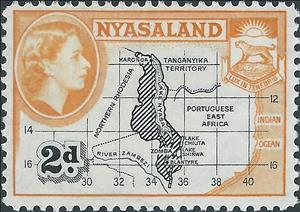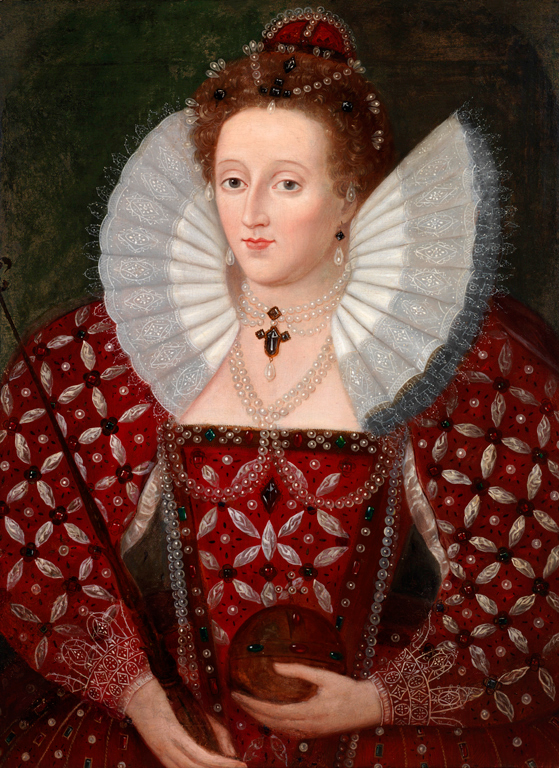Stamp: Map and Coat of Arms (British colonies and territories 1953)
Map and Coat of Arms (British colonies and territories 1953)
01 September (British colonies and territories ) within release Nyasaland goes into circulation Stamp Map and Coat of Arms face value 2 British penny
| Stamp Map and Coat of Arms in catalogues | |
|---|---|
| Michel: | Mi:GB-NY 102 |
| Stamp Number: | Sn:GB-NY 100 |
Stamp is square format.
Also in the issue Nyasaland:
- Stamp - Canoe on Lake Nyasa face value ½;
- Stamp - Elisabeth II and Leopard (Panthera pardus) face value 1;
- Stamp - Tea Estate face value 1½;
- Stamp - Map and Coat of Arms face value 2;
- Stamp - Grading Cotton face value 2½;
- Stamp - Fishing Village face value 3;
- Stamp - Fishing Village face value 4½;
- Stamp - Tea Estate face value 6;
- Stamp - Canoe on Lake Nyasa face value 9;
- Stamp - Map and Coat of Arms face value 1;
- Stamp - Fishing Village face value 2;
- Stamp - Tobacco Estate face value 2'6;
- Stamp - Arms of Nyasaland face value 5;
- Stamp - Map and Coat of Arms face value 10;
- Stamp - Arms of Nyasaland face value 20;
Stamp Map and Coat of Arms it reflects the thematic directions:
A head of state (or chief of state) is the public persona that officially represents the national unity and legitimacy of a sovereign state. In some countries, the head of state is a ceremonial figurehead with limited or no executive power, while in others, the head of state is also the head of government. In countries with parliamentary governments, the head of state is typically a ceremonial figurehead that does not actually guide day-to-day government activities and may not be empowered to exercise any kind of secular political authority (e.g., Queen Elizabeth II as Head of the Commonwealth). In countries where the head of state is also the head of government, the president serves as both a public figurehead and the actual highest ranking political leader who oversees the executive branch (e.g., the President of the United States).
A map is a symbolic depiction emphasizing relationships between elements of some space, such as objects, regions, or themes. Many maps are static, fixed to paper or some other durable medium, while others are dynamic or interactive. Although most commonly used to depict geography, maps may represent any space, real or imagined, without regard to context or scale, such as in brain mapping, DNA mapping, or computer network topology mapping. The space being mapped may be two dimensional, such as the surface of the earth, three dimensional, such as the interior of the earth, or even more abstract spaces of any dimension, such as arise in modeling phenomena having many independent variables. Although the earliest maps known are of the heavens, geographic maps of territory have a very long tradition and exist from ancient times. The word "map" comes from the medieval Latin Mappa mundi, wherein mappa meant napkin or cloth and mundi the world. Thus, "map" became the shortened term referring to a two-dimensional representation of the surface of the world.
Queen - the title of reigning female monarch or the wife of the king in a number of countries
A lake is a naturally occurring, relatively large and fixed body of water on the Earth's surface. It is localized in a basin or interconnected basins surrounded by dry land. Lakes lie completely on land and are separate from the ocean, although they may be connected with the ocean by rivers, such as Lake Ontario. Most lakes are freshwater and account for almost all the world's surface freshwater, but some are salt lakes with salinities even higher than that of seawater. Lakes vary significantly in surface area and volume.




